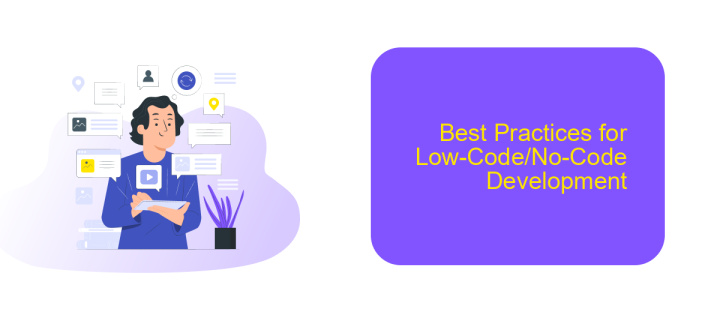Low-Code No-Code Mobile App Development
Low-code/no-code mobile app development is revolutionizing the tech landscape by enabling individuals with minimal coding experience to create functional and sophisticated mobile applications. This innovative approach democratizes app development, allowing businesses to rapidly prototype, iterate, and deploy apps without the need for extensive programming skills. Discover how this paradigm shift is transforming the way we build and interact with mobile technology.
Introduction
In today's fast-paced digital landscape, businesses are constantly seeking ways to streamline their processes and reduce development time. Low-Code No-Code (LCNC) platforms have emerged as a game-changer, enabling users to create mobile applications with minimal coding knowledge. These platforms democratize app development, making it accessible to a broader audience, including non-developers.
- Accelerated development timelines
- Reduced costs and resource allocation
- Enhanced collaboration between technical and non-technical teams
One of the most significant advantages of LCNC platforms is their ability to integrate seamlessly with various services and APIs. For instance, ApiX-Drive simplifies the process of connecting different applications, automating workflows, and ensuring data consistency across platforms. By leveraging such tools, businesses can focus on innovation and user experience, rather than getting bogged down by technical complexities.
Benefits of Low-Code/No-Code

Low-code and no-code mobile app development platforms offer significant advantages, especially in terms of speed and cost-efficiency. These platforms enable businesses to create functional applications without the need for extensive coding knowledge, thereby reducing development time from months to weeks or even days. This rapid development cycle allows companies to respond quickly to market demands and stay ahead of competitors. Additionally, the reduced need for specialized developers translates to lower development costs, making it an attractive option for startups and small businesses.
Another key benefit is the ease of integration with other services and systems. Platforms like ApiX-Drive facilitate seamless integration, allowing apps to connect with various third-party services effortlessly. This capability ensures that businesses can automate workflows, synchronize data across different platforms, and enhance overall operational efficiency. Furthermore, low-code/no-code platforms often come with built-in security features and compliance standards, providing peace of mind when it comes to data protection and regulatory requirements.
Types of Low-Code/No-Code Tools

Low-code and no-code tools have revolutionized the way mobile applications are developed, making it accessible for non-developers and speeding up the development process for professionals. These tools can be broadly categorized into different types based on their functionalities and target users.
- Drag-and-Drop Builders: These tools offer a visual interface where users can drag and drop elements to create their app. They are ideal for beginners who want to create simple applications without writing any code.
- Workflow Automation Tools: These tools focus on automating business processes and workflows. ApiX-Drive, for instance, allows users to integrate various services and automate data flows between them, enhancing the app's functionality without extensive coding.
- Template-Based Platforms: These platforms provide pre-built templates that can be customized to meet specific needs. They are suitable for users who need a quick start and have limited customization requirements.
- Full-Stack Development Platforms: These are more advanced tools that offer both front-end and back-end development capabilities. They are designed for developers who need more control over the app's architecture while still benefiting from low-code/no-code efficiencies.
Each type of low-code/no-code tool has its unique advantages and is suitable for different use cases. By understanding these categories, users can choose the right tool that aligns with their project requirements and skill levels.
Best Practices for Low-Code/No-Code Development

To ensure the success of your low-code/no-code mobile app development, it's crucial to follow certain best practices. Start by clearly defining your project requirements and objectives. This will help you choose the right platform and tools that align with your goals.
Next, focus on user experience by creating intuitive and user-friendly interfaces. Conduct usability testing to gather feedback and make necessary adjustments. Additionally, ensure that your app is scalable and can handle increased user loads as it grows.
- Maintain clean and organized workflows to streamline development.
- Use version control to manage changes and collaborate effectively.
- Implement robust security measures to protect user data.
- Regularly update and maintain your app to fix bugs and add new features.
For seamless integration with other services, consider using tools like ApiX-Drive. This platform simplifies the process of connecting your app with various APIs, ensuring smooth data flow and enhanced functionality. By adhering to these best practices, you can create reliable and efficient mobile applications with minimal coding effort.
- Automate the work of an online store or landing
- Empower through integration
- Don't spend money on programmers and integrators
- Save time by automating routine tasks
Future of Low-Code/No-Code Apps
The future of low-code/no-code apps is incredibly promising, as these platforms continue to democratize app development, making it accessible to a broader audience. Innovations in AI and machine learning are set to further enhance these platforms, enabling more sophisticated and intelligent applications with minimal coding. As businesses strive for agility and rapid digital transformation, low-code/no-code solutions will play a crucial role in reducing development time and costs, empowering non-technical users to create functional and customized mobile apps.
Moreover, the integration capabilities of low-code/no-code platforms are expanding, enabling seamless connectivity with various services and APIs. Tools like ApiX-Drive simplify the integration process, allowing users to effortlessly connect their apps with multiple third-party services without writing complex code. This ease of integration ensures that low-code/no-code apps can be part of a larger ecosystem, providing comprehensive solutions that meet diverse business needs. As these platforms evolve, we can expect even greater efficiency, flexibility, and innovation in mobile app development.
FAQ
What is Low-Code No-Code mobile app development?
Who can benefit from Low-Code No-Code platforms?
What are the limitations of Low-Code No-Code development?
How can I integrate third-party services into my Low-Code No-Code app?
Is it secure to use Low-Code No-Code platforms for app development?
Apix-Drive is a universal tool that will quickly streamline any workflow, freeing you from routine and possible financial losses. Try ApiX-Drive in action and see how useful it is for you personally. In the meantime, when you are setting up connections between systems, think about where you are investing your free time, because now you will have much more of it.


